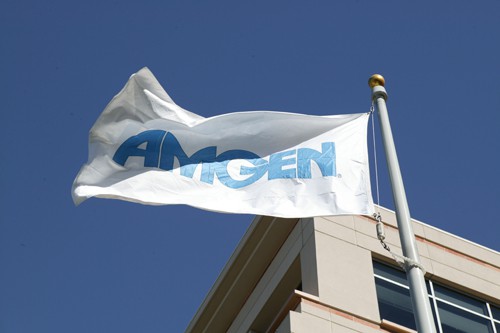
Amgen and Novartis’ much-anticipated new migraine drug Aimovig has generated positive data in another late-stage trial, halving migraine days in 30% of patients with continued symptoms despite multiple earlier treatments.
The drug – which is vying to become the first calcitonin gene-related peptide (CGRP) receptor-targeting drug to reach the market for migraine – was more than twice as likely to hit this target compared to placebo. In the control group just under 14% of patients achieved a 50% reduction in migraine days.
The 246-patient study involved people with episodic migraine who had previously failed between two and four prior treatments, either because they were ineffective or couldn’t be tolerated, who were randomised to therapy with Aimovig (erenumab) or placebo for 12 weeks.
Improvements with Aimovig were also observed for secondary measures including the number of monthly migraine days and the need for acute treatment for breakthrough migraine attacks.
Amgen R&D chief Sean Harper said: “We are encouraged by these new findings, which add to the growing body of clinical evidence supporting potential use of Aimovig across a broad spectrum of patients with migraine.”
The new data comes just a month before the FDA is due to deliver its verdict on Novartis and Amgen’s marketing application for Aimovig, which is a little ahead of other CGRP drugs in development, a group which includes Eli Lilly’s galcanezumab, Teva’s fremanezumab and Alder’s eptinezumab. The two partners maintain that Aimovig is different to its rivals because they target CGRP itself, as opposed to the receptor pathway.
Lilly’s drug seems to be the closest behind Aimovig, having been filed towards the end of last year, and there is a lot to play for with analysts predicting that the CGRP class could eventually make $4bn in sales by 2026.
The drugs are expected to be used most for severe chronic migraine patients who can’t get relief from the current array of therapies, which consists of pain-killing drugs, triptans and repurposed medicines such as the anticonvulsant topiramate or Allergan’s Botox.




